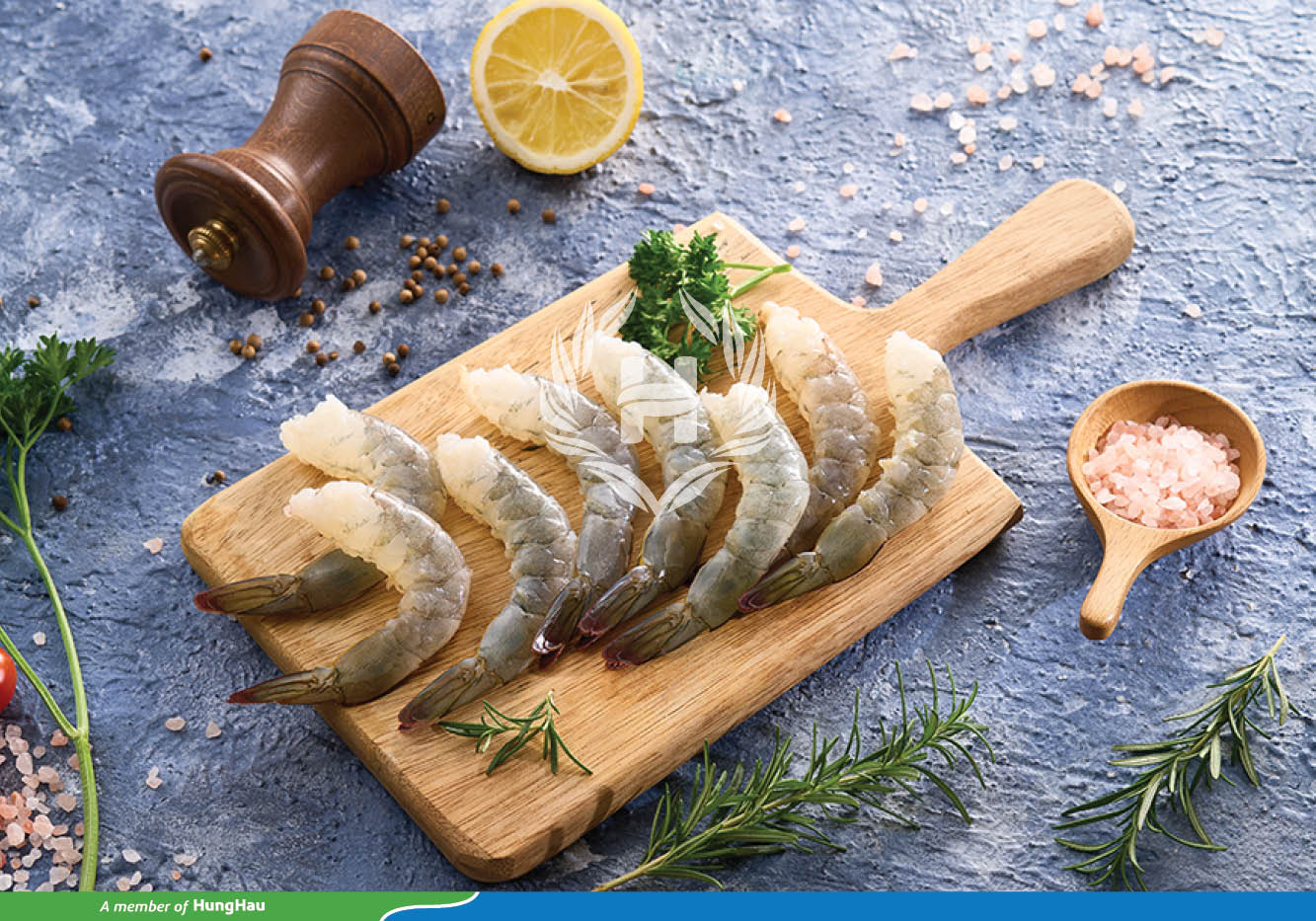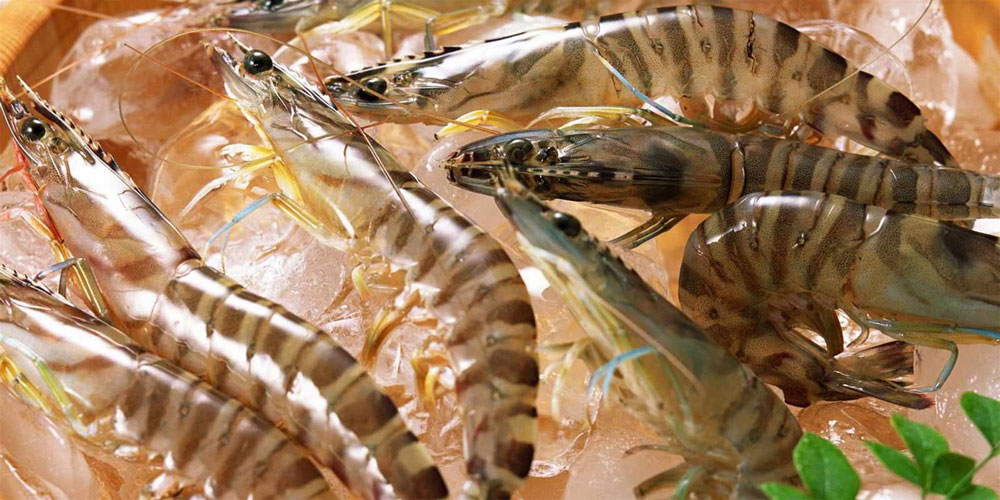Vietnam Seafood
Whiteleg shrimp spearheads growth, premium black tiger shrimp recovery: Can shrimp market maintain pace after May?
China, U.S. Witness Surge in Whiteleg Shrimp Imports
In May 2025, whiteleg shrimp exports reached 30,089 tons,up 23% compared to April and 6% year-on-year. he main exported products included: headless boiled shrimp, peeled tail-on frozen shrimp, sushi shrimp, steamed shrimp, breaded fried shrimp with sauce and others.
The top five whiteleg shrimp exporters in the first five months were STAPIMEX, Minh Phu Hau Giang, Sao Ta, Minh Phu and Cases.
Major markets such as the United States, China and Hong Kong recorded robust growth with increases of 72% and 59%, respectively. South Korea rose 20%, the EU grew 14%, and Japan edged up 3% while the UK was the only market to report a decline, down 5% from the previous month. The average export price for whiteleg shrimp stood at 9.01 USD/kg, up 1% month-on-month.
In the domestic market, farm-gate whiteleg shrimp prices rose by 5–7% across all sizes due to heightened export demand, particularly from the U.S where processors ramped up raw material purchases ahead of the expiration of Trump’s tariff suspension measures.
The United States remained a bright spot, importing 7,060 tons of Vietnamese whiteleg shrimp in May – the highest volume since October 2024 – at an average price of 11.60 USD/kg, a 0.9% month-on-month. Core product lines exported to the U.S. included peeled tail-on shrimp, deveined shrimp and headless shell-on shrimp, all showing strong growth in both volume and value.
Exports to China reached 4,500 tons, also the highest since October, though the average price fell 3% to 6.50 USD/kg. The EU remained a stable market with a volume of 4,600 tons and an average price slightly down by 1.3% to 7.60 USD/kg. Japan maintained a volume of 3,700 tons with the average price rising 4.4% to 9.40 USD/kg, while South Korea recorded 3,500 tons with the average price unchanged at $7.90/kg.

Black Tiger Shrimp Rebounds, Dominates Premium Segment
While whiteleg shrimp continued to account for a significant share of total export value, black tiger shrimp has shown strong resilience in the premium segment with steady growth in May 2025. Tiger shrimp export volume reached 4,353 tons, up 8% from the previous month and 6% compared to the same period in 2024.
Key exported tiger shrimp products included: headless PTO/PDTO shrimp, whole shrimp, peeled frozen shrimp, steamed shrimp and HLSO shrimp.
The top tiger shrimp exporters during this period were Minh Phu, Minh Phu Hau Giang, Camimex, Minh Cuong and Southern Shrimp.
Exports of black tiger shrimp to Japan rose 24%, the U.S. surged 44%, EU increased 26%, South Korea grew 12% and the UK climbed 20%. In contrast, China and Hong Kong – the two largest markets for Vietnamese tiger shrimp – saw a slight decline of 1%.
The average export price for tiger shrimp rose by 4%, reaching 11.82 USD/kg. However, raw material shrimp supply slightly decreased by 2% to 24,000 tons, following a sharp 32% increase in April. An increase in the supply of large-sized shrimp led to price adjustments at the farm level. Specifically, tiger shrimp sized 20–40 shrimp/kg dropped by 2%, 50 shrimp/kg remained stable, while 80 shrimp/kg fell by 9%. Forecasts for June suggest continued improvement in supply.
In the U.S, tiger shrimp imports from Vietnam reached 600 tons, with prices surging to 17.10 USD/kg, the highest among all markets. Japan imported 886 tons with prices up 6% to 12.40 USD/kg. The EU recorded its fourth consecutive month of growth, reaching 390 tons in May, though prices fell 6.1% to 10.70 USD/kg. South Korea imported nearly 200 tons with the average price dropping significantly by 30% to 8.30 USD/kg. China maintained stable volumes at 1,300 tons, but prices continued to decline by 3.3% to 8.90 USD/kg.
Vietnamese black tiger shrimp is gaining strong traction in premium markets such as Japan, the EU, and Switzerland, where there is strong demand for ecologically farmed tiger shrimp from mangrove forests, ensuring traceability and sustainability standards. This segment offers high value and significant growth potential in the future.
However, Vietnamese black tiger shrimp faces increasing competition from India, which is restructuring to boost tiger shrimp farming due to its higher value. In Andhra Pradesh, farmers have begun adopting a two-crop-per-year model for tiger shrimp instead of the traditional single crop, harvesting smaller sizes (30–50 shrimp/kg) to serve Asian markets such as China, Japan and South Korea.
Despite positive results in May, the outlook for June and the second half of the year remains uncertain. Demand in key markets is expected to rise seasonally during the summer, but growth may be restrained by cautious sentiment among importers, particularly in the U.S, where processors are pausing new contracts amid uncertainty over future tariff policies. If U.S countervailing tariffs do not yield the expected outcomes, they could significantly impact the competitiveness of Vietnamese shrimp in this market.
Source: https://seafood.vasep.com.vn/



 Tiếng Việt
Tiếng Việt